
Milano 2022: Nature Awakens
This year’s Milan Design Week aimed to highlight fundamental values of sustainability, craftsmanship, and social connection. Despite fewer grandiose showcases, the influential event was able to harness new markets and innovative concepts to good effect. We have brought together some impressions of the major trends observed throughout the week.
“The Salone is back, as we know it!” This was the announcement made by the organizers of the Salone de Mobile, Milan’s world-famous furniture fair, which celebrated its 60th anniversary this year. Its return was no small matter: after the event was cancelled completely in 2020 and held in a scaled-down format in September 2021, this year’s event was postponed from April to June. However, the organizers were able to finally crown the fair as a success beyond all expectations.
The 2022 fair welcomed 2,175 participating companies (27% of them from outside Italy), as well as 600 young designers who had been invited to exhibit their work as part of SaloneSatellite. While more than 262,000 visitors from 173 countries toured the fair, Russian and Chinese guests were notable for their absence (for comparison, these two countries alone accounted for 42,000 visitors during the 2019 fair). That said, this lack of visitors was balanced by the organizers’ efforts to develop new markets and strengthen ties with other countries that had rarely dispatched representatives to the fair in the past.
As a result, the fair was filled with visitors who, like every year, were eager to uncover the latest and greatest in the design world. This was no easy task: the 2022 fair was a case in point that in order to understand trends and fashions, it is not enough to simply observe new shapes or colourful patterns. You have to read the fine print.
Essence over form
For example, visitors to the Kartell pavilion, hosting a longstanding brand that remains a cornerstone of contemporary Italian design, had to pass through a long corridor lined with “storefronts” displaying some of Kartell’s most iconic designs. On top of each item were keywords that together expressed the company’s DNA: design, beauty, sustainability, intelligence, technology, quality, culture, and future.
Surprisingly, the first item on display was the Masters chair by world-famous designer Philippe Starck, which hybridizes the shapes of three other iconic 20th century chairs and had already been launched at the 2009 fair. It was followed by other familiar products, such as the Bourgie lamp by Ferrucio Laviani, Starck’s Louis Ghost chair, and Ron Arad’s instantly recognizable Bookworm bookshelf.
Only a closer look at the small caption below these items revealed that the innovation Kartell was presenting at this, the world’s largest and most important design event, was not in form but in essence: the use of recycled materials and sustainable processes. This continued into the main display area, which featured, among other items, the Re-Chair by Antonio Citterio, produced using recycled illy coffee capsules.
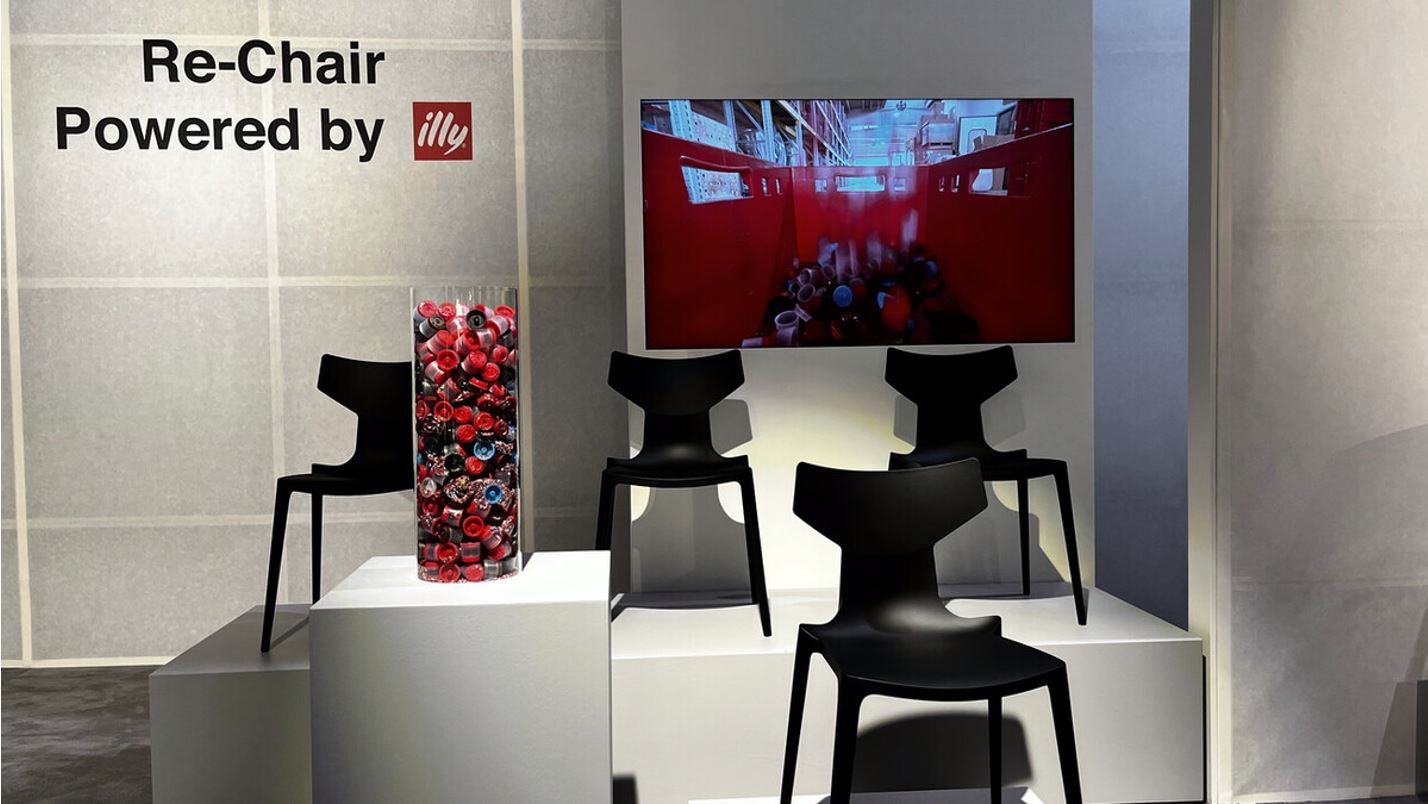 Re-Chair by Antonio Citterio
Re-Chair by Antonio Citterio
Sustainability and social messages
Kartell was far from the only company at the fair emphasizing calm colours and ecological and social messages. The Spanish rug brand nanimarquina, bearing the name of its founding designer, dedicated a large portion of its exhibition space to piles of leftover threads from the manufacturing process, while announcing its commitment to a reduced carbon footprint.
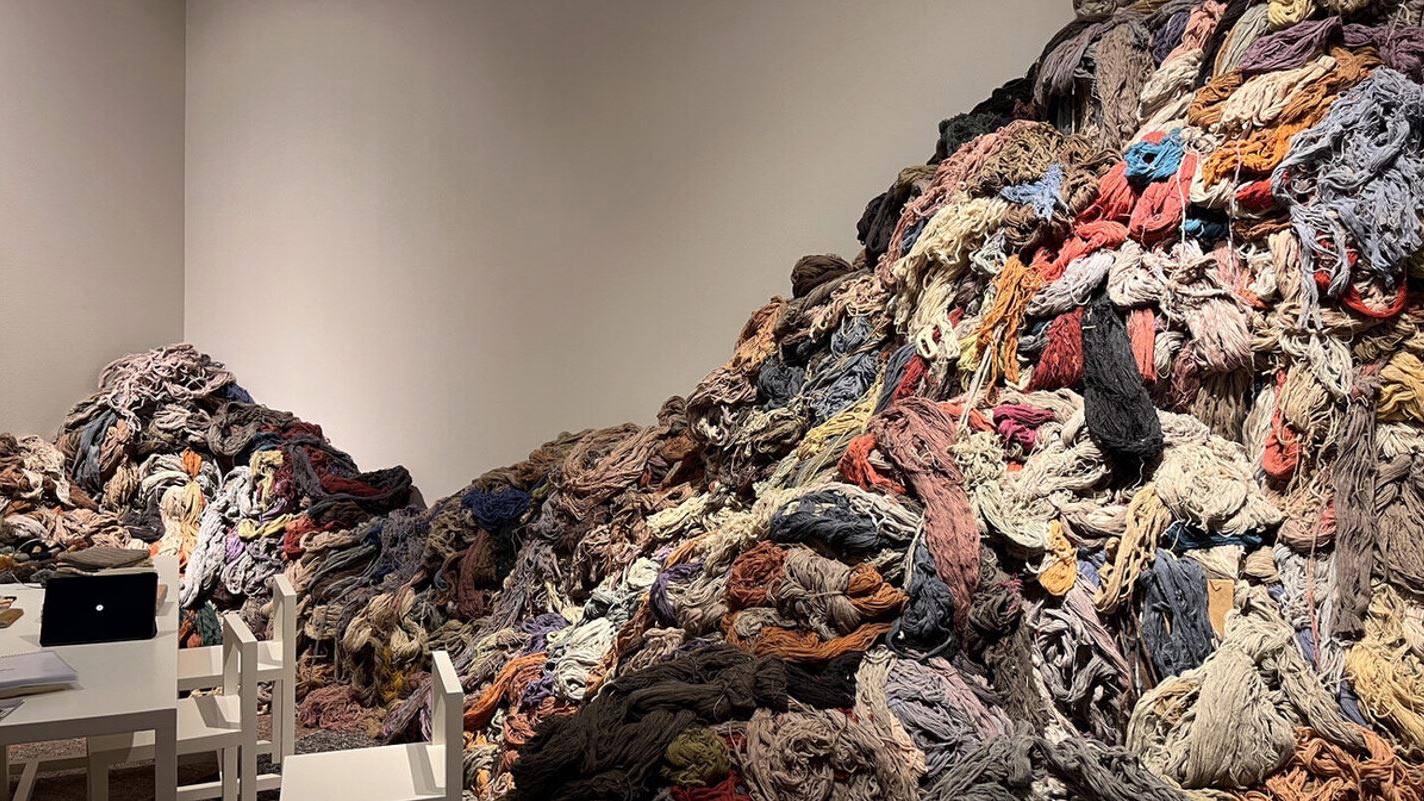 Nanimarquina
Nanimarquina
Under the “Re-Rug” title, the walls of the pavilion showcased rugs that were created from these same leftover threads. One of these was the playful Troupe rug by Spanish designer Jaime Hayun, who previously collaborated with Caesarstone on our Stone Age Folk installation for the 2017 Milan Design Week. This time, again, Jaime was inspired by the world of plants and animals, as well as the folklore of various cultures.
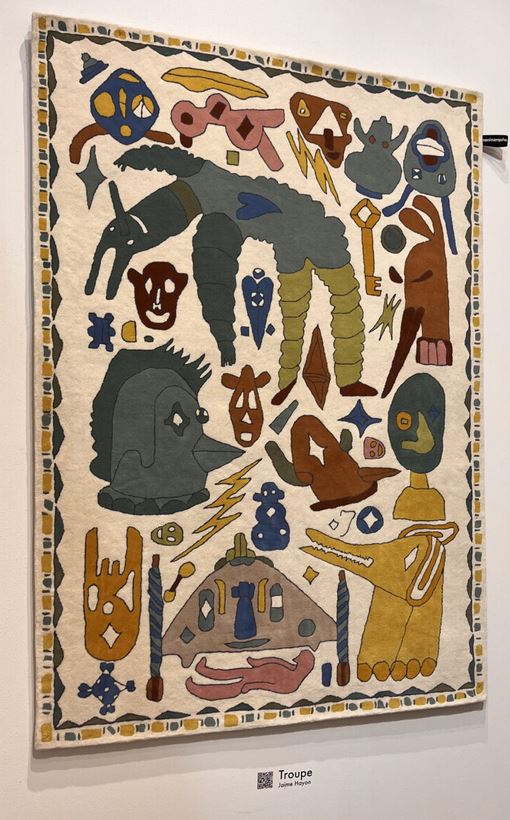 Jaime Hayun for nanimarquina
Jaime Hayun for nanimarquina
One of the most impressive and optimistic exhibits came from Italian design brand Zanotta. Under the title of Re-Connecting, the brand indicated its mission to reconnect people, items, and the planet by presenting distant, longed-for landscapes in response to COVID-related lockdowns.
“Let’s rediscover real people with real needs and return them to the center of the design process,” read the notice at the entrance to the exhibition space. “We design functional, comfortable, flexible furnishings for every part of daily life, design items that know how to age gracefully.”
Similar messages could be found in the fair’s biennial exhibition, which this year was dedicated to the kitchen space. “Slow living, technology, and sustainability are the keywords in the wake of recent social changes,” wrote its organizers, referring to the lengthy periods that everyone has spent in the domestic space over the past two years. “Due to the pandemic, we ate in the kitchen, cooked in the kitchen, but also worked, studied, entertained, and so on.”
As a result, it was easy to pinpoint this year’s desire to design the kitchen as a pleasant space for ongoing activity, with ad hoc solutions for smaller spaces. This was reflected in elegant finishes, rounded lines, and a colour range that goes all the way from conservative and classic to bold colours that express the joy of life.
Sustainability has also become a cross-brand criterion, which is expressed through energy savings, making the kitchen part of a smart home, opting for natural warm materials like wood and stone (alongside colder materials such as steel and glass), and preferring modular kitchens with materials that can be recycled or units that can be repurposed.
Lots of green and a little brown
The social and ecological approach was also in evidence beyond the fair, whether in essence or appearance – calm brown and green tones paired with soft materials. For example, the Italian design brand Moroso wanted to emphasize balance and harmonious co-existence with the natural environment at its city center showroom. This was achieved through the use of recycled cotton and wool alongside production waste, giving the furniture a distinctive texture.
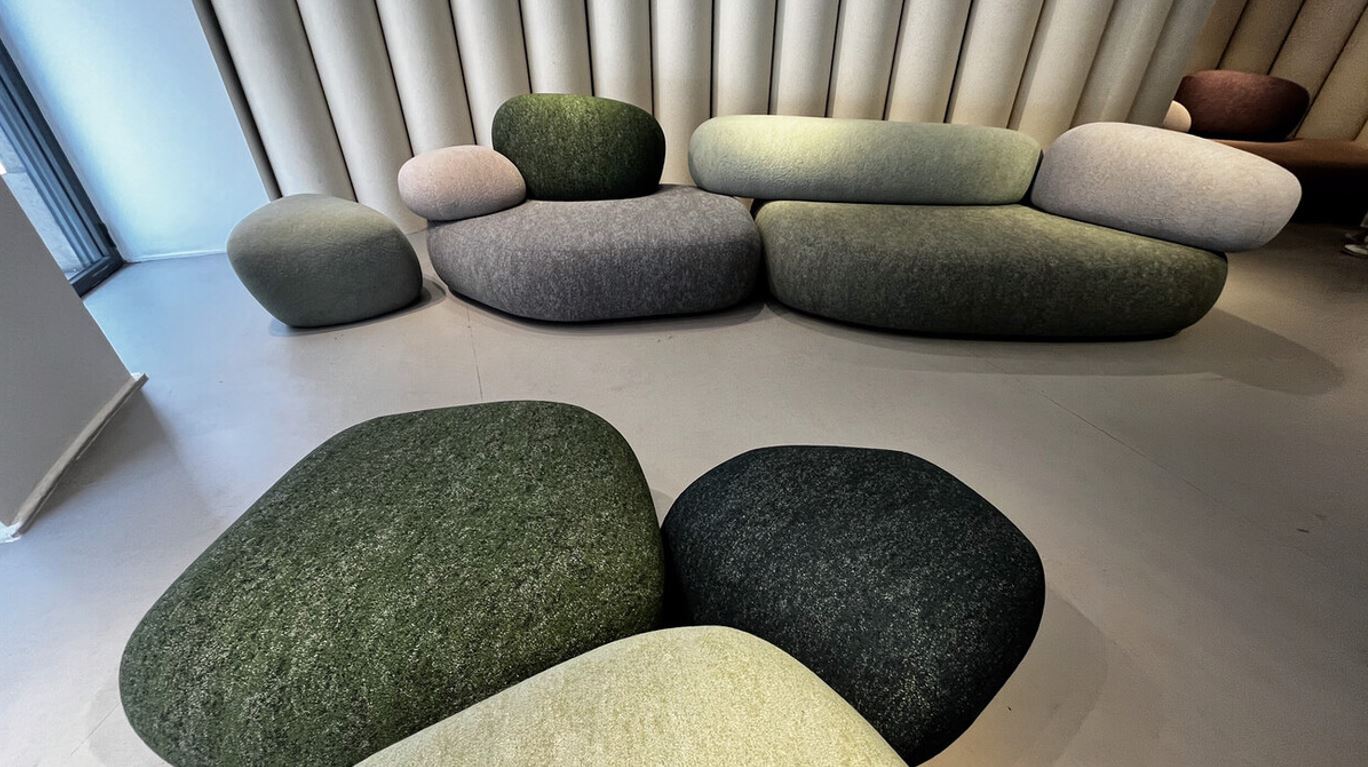 Pebble Rubble by the Front Design Studio for Moroso
Pebble Rubble by the Front Design Studio for Moroso
Of the four new collections on display, Pebble Rubble by the Swedish studio Front Design stood out at the showroom entrance. The sofas and armchairs had a striking appearance resembling boulders polished by the rain and wind over time and covered by plant life that has softened their roughness and made them both comfortable and welcoming.
Acclaimed British designer Tom Dixon was back in Milan for the 20th time and celebrated the occasion with a partial retrospective. Alongside some of his best-known pieces, several of which were first displayed at Caesarstone’s “The Restaurant” installation during Milan Design Week 2016, he presented new furniture concepts on the entrance floor of the Palazzo Serbelloni in the city center, including those made from eelgrass and mycelium. In doing so, he was also joining the global trend of returning to processes that occur in nature and attempting to harness them for industrial production.
Floating Forest, the installation by Italian architect Stefano Boeri on the canals in the Navigli neighborhood, continued his theme of bringing nature back to the cities. Having designed one of Milan’s most iconic buildings – the Bosco Verticale (“Vertical Forest”) towers, which are surrounded by trees from top to bottom – Boeri has now collaborated with the Timberland footwear and fashion brand to create an installation that imagines a floating forest that functions as an independent ecosystem, including 610 plants from 30 different species.
Boeri seeks to promote his vision for a greener, more egalitarian urban future, fighting against the effects of climate change while also improving quality of life for city residents. He highlights the ways in which introducing nature to city centers can reduce air pollution and improve environmental health, in addition to protecting biodiversity for future generations.
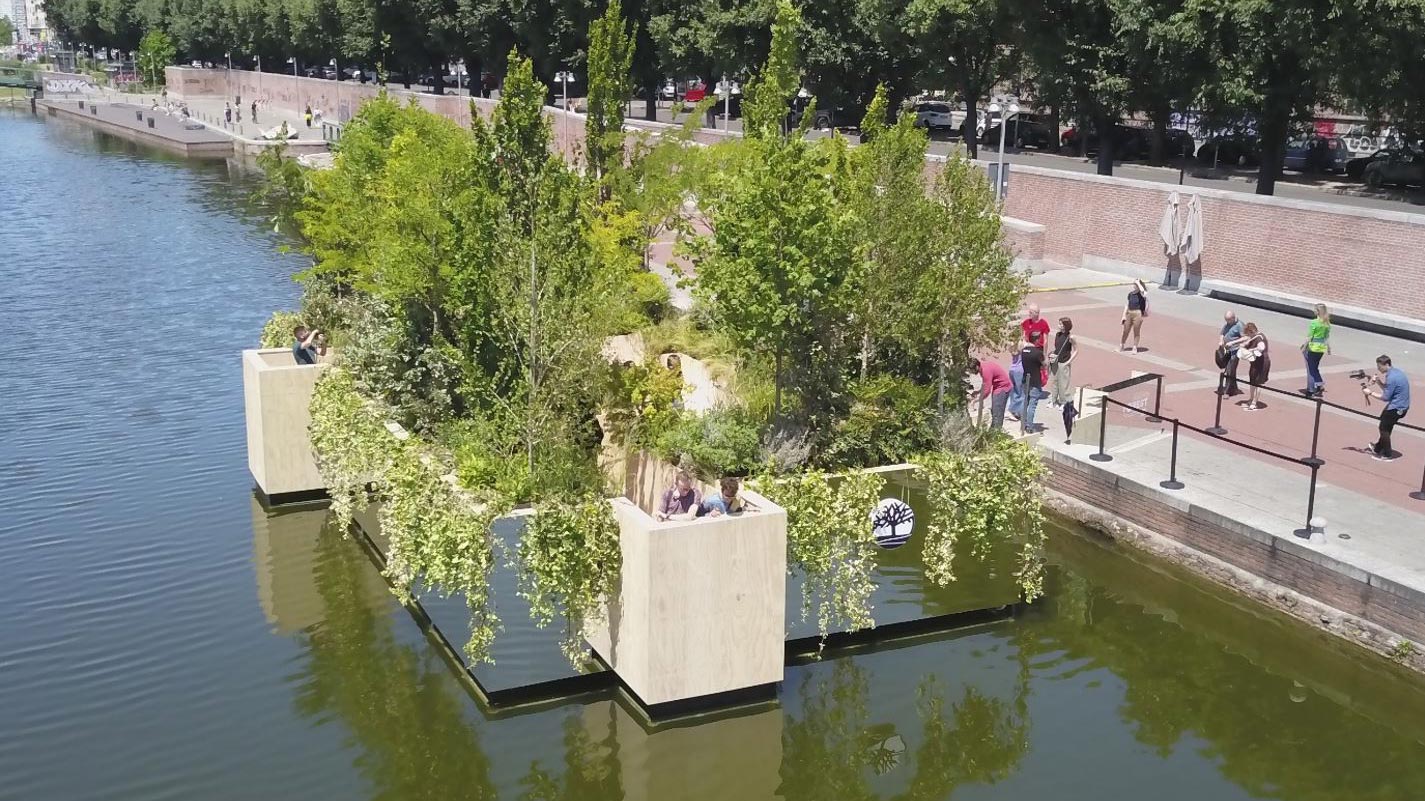 Floating Forest by Stefano Boeri for Timberland
Floating Forest by Stefano Boeri for Timberland
Picture: Daniela Di Corleto
Speaking of urban life and air pollution, Lexus unveiled its colourful Sparks of Tomorrow installation by Germane Barnes in the nearby Tortona neighbourhood, depicting its vision for a sustainable future. At the center of the installation were the contours of the Lexus RZ, the company’s first dedicated battery-electric model, illuminated by Aqua Creations’ Code 130° collection of silk pendant lights, which gave the entire exhibit a dreamy, optimistic feel.
 Sparks of Tomorrow by Lexus
Sparks of Tomorrow by Lexus
Tech giant Amazon also came to Milan with a surprising installation: a spectacular mirror maze in the University of Milan’s garden inspired by the classic hedge mazes found in the grounds of Italian estates. Found among the rounded mirror walls of different heights, each one bearing the familiar Amazon arrow, was a display of products, all of which could be bought by scanning a barcode to find a link to the Amazon website. The project, created in collaboration with the Lissoni & Partners studio, combined a salute to Italian design with a commitment to environmental and climate protection. At the entrance to the installation was a statement indicating that Amazon is working to reduce its CO2 emissions to zero by 2040, ten years earlier than the international Paris Agreement.
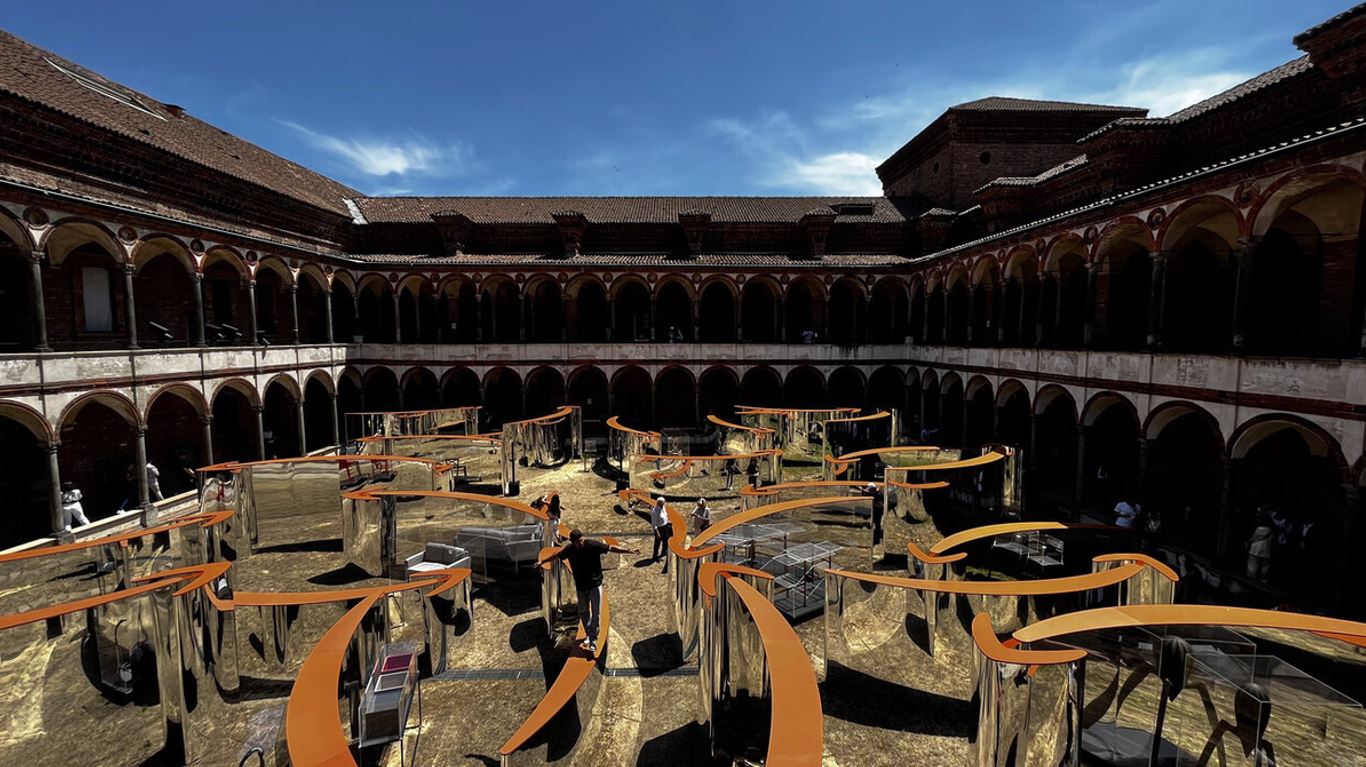 Amazon's Mirror Maze
Amazon's Mirror Maze
Like a pencil slipping across the page
Amazon was far from the only global brand promoting design values. Swedish furniture company IKEA presented the “IKEA Festival” in the Tortona neighbourhood and in front of the Superstudio, covering 2,500 sqm. In addition to a ball pit for kids, the option – how could we resist? – to buy a vegan hotdog, and a two-story house than offered “serving suggestions” for families of all shapes and sizes, the company also held performances and meetings with designers.
In a separate space, it presented an inclusive approach that emphasized the fact that more and more people worldwide live (and will live) alone, while reflecting on the meaning of moving into your very first apartment. Alberto Costa, a designer from the home furniture division of IKEA Italy, explained that this has led them to emphasize colour and animals in order to compensate for the turbulent emotional environment of the past two years.
“When you move, you can do what you want to do and be who you want to be, even if it’s a small space. It still reflects who you are. Even on the first night, regardless of whether everything is still in boxes, you can easily turn a space into a home. It’s enough to have your own string lights, plates, and cutlery, and you can feel at home.”
A more human-centered, non-industrial sense was also present among the many craft items displayed by various young designers in alternative showrooms across the city, next to well-established companies and luxury fashion brands. For example, the showroom of Cassina, the Italian furniture brand, was the setting for FormaFantasma’s “Post Scriptum” – a unique collection of hand-painted porcelain items, developed in collaboration with the highly respected Ginori 1735 ceramic brand. FormaFantasma selected some of the best-known designs from the company’s archives, giving them a contemporary interpretation, “like a pencil slipping across the page.”
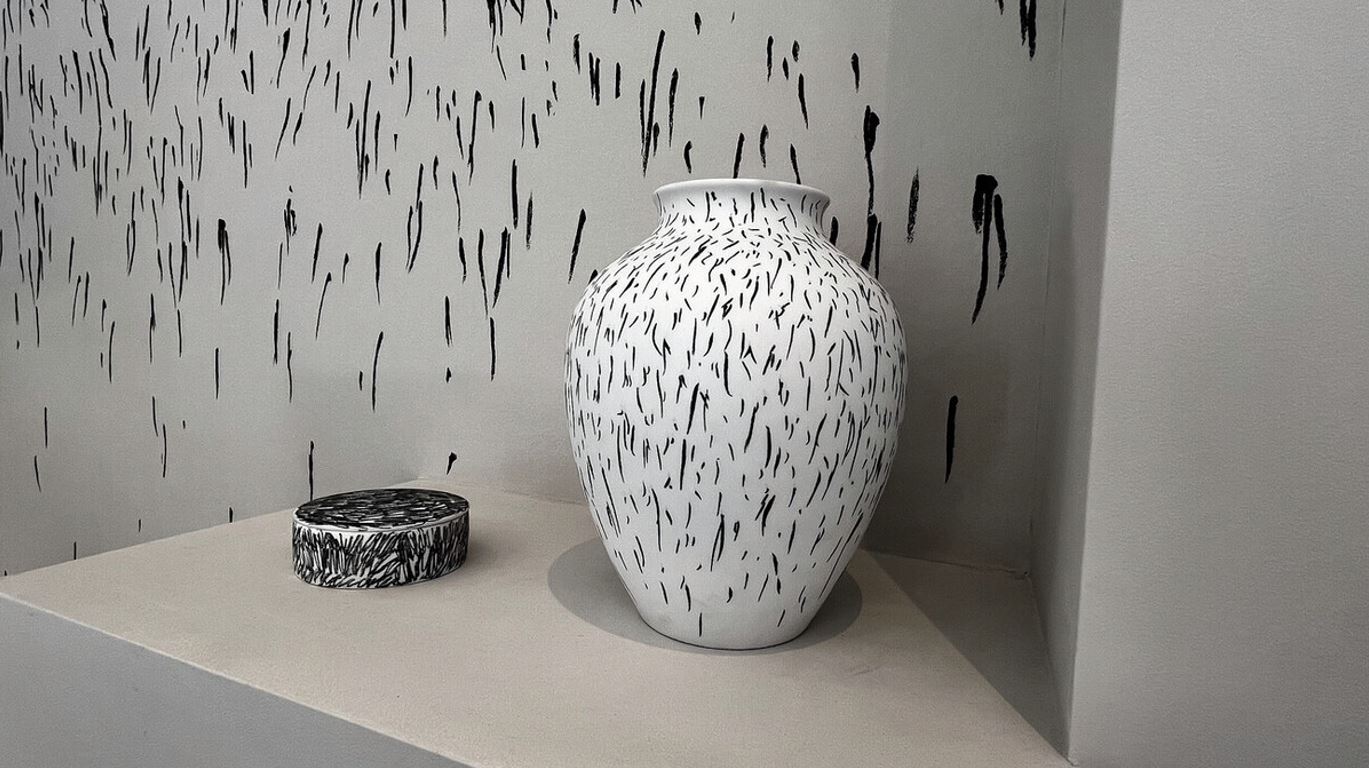 “Post Scriptum” by FormaFantasma
“Post Scriptum” by FormaFantasma
This year, the French luxury brand Hermès chose to emphasize textiles in the home environment. Inside four wooden structures covered with transparent coloured paper and similar in shape to illuminated water towers, the brand presented a collection of textiles offering a balance between materials (leather, porcelain, fabric), colours, and graphic compositions, in a delicate interplay of texture, material, colour, and transparency.
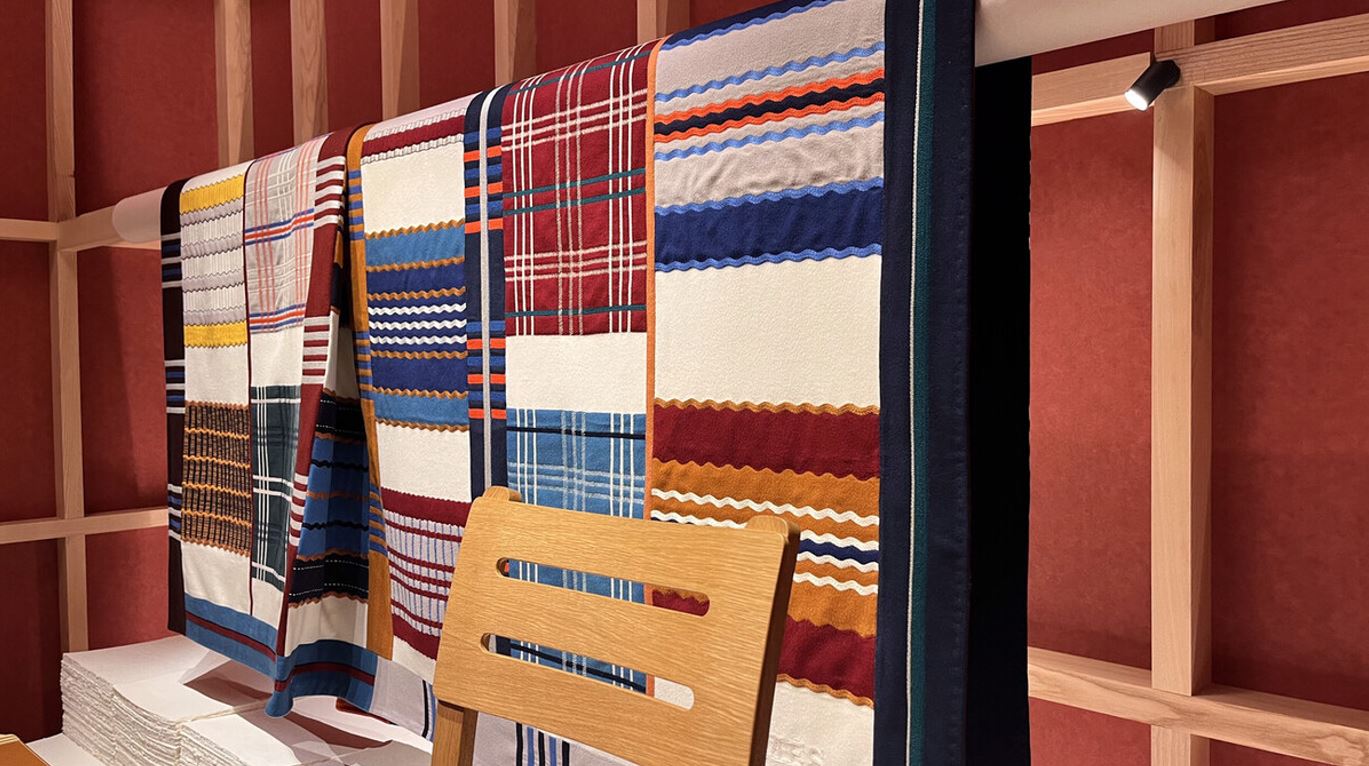 Hermès: textiles in the home environment
Hermès: textiles in the home environment
Haute couture and spaghetti patterns
When all is said and done, despite the focus on nature, greenery, and various social and ecological issues, it is still impossible to visit Milan, the fashion capital, without encountering a bit of bling-bling and colourful celebration. Toiletpaper magazine obliged by opening the doors of its crazy, colourful, and seductive home. Founded by Maurizio Cattelan and Pierpaolo Ferrari about a decade ago, the biennial magazine is famous for its controversial images, especially those related to the culture of conspicuous consumption, waste, and the complex relationship between man and nature.
Floor-to-ceiling wallpaper in bombastic colours (and spaghetti patterns), oversized furniture and huge, cheeky mirrors – they all filled the building, which during the rest of the year serves as the offices for the magazine’s editorial team. Among the new products, designed to make everyday life more bizarre and creative, you could also find mirror art and antique-style trunks bearing the infamous “SHIT” logo.
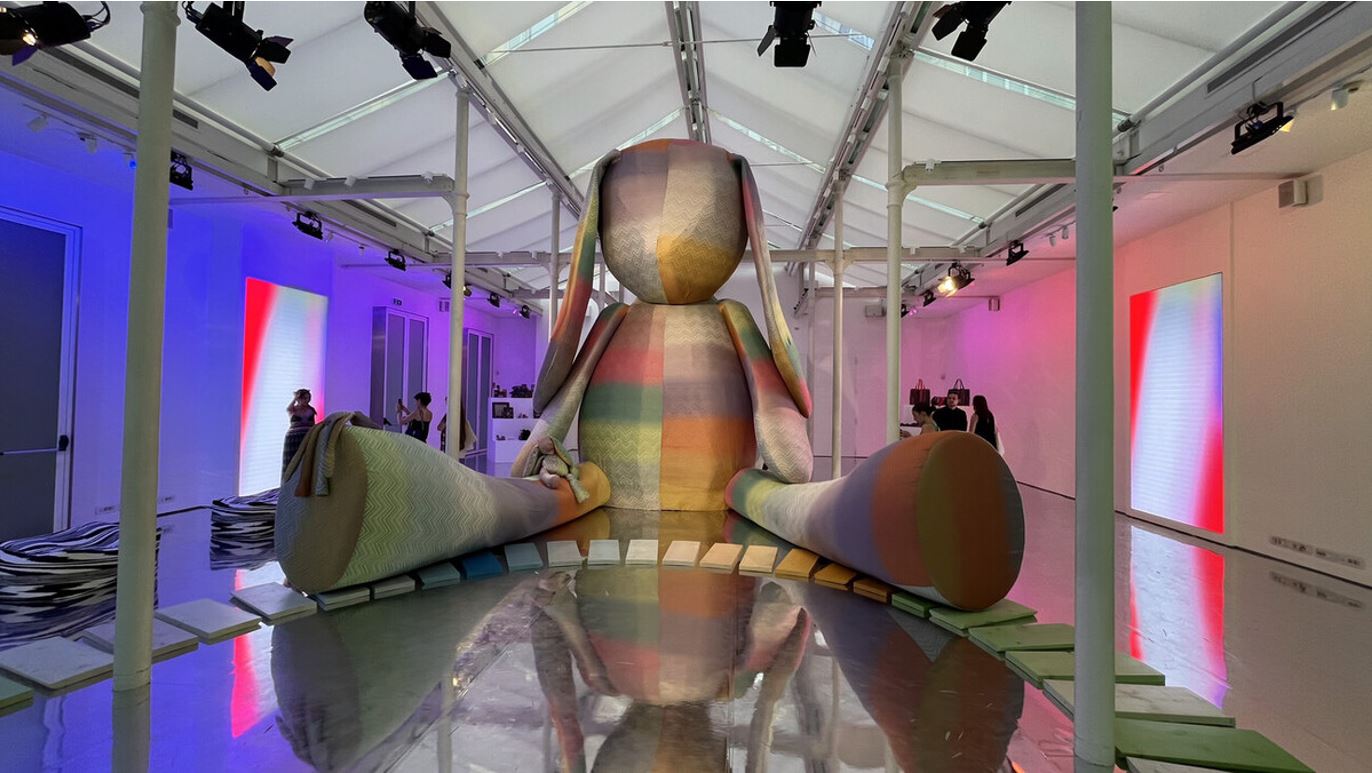 Giant textile bear by Missoni
Giant textile bear by Missoni
The haute couture brands of Dior, Missoni, Versace, and Dolce & Gabbana were also present in Milan, showcasing their own collections and competing for the title of most colourful, daring, or absurd. Louis Vuitton’s elegance stood out, as usual, marking a decade of its Objects Nomades collection with an especially vibrant presentation. The company, which had its roots in the production of leather bags and trunks, has spent several years inviting top designers to create furnishings and other items inspired by global travel.
 Nomades collection by Louis Vuitton
Nomades collection by Louis Vuitton
This year, their exhibition featured selected furniture items by leading designers like the Campana brothers, Marcel Wanders, and Patricia Urquiola. Raw Edges (Yael Mer and Shay Alkalay), the studio that presented “Islands” with Caesarstone in 2014 – an 18-meter-long kitchen island that focused on a new conceptual approach to storage, food, and dining in the kitchen space – introduced a new version of the Cosmic Table, designed for use in outdoor spaces.
It is still too early to say what Milan Design Week will look like in the years to come. Will it maintain its status as an unmissable design event, while keeping to a reasonable, proportionate scale? Will social and ecological messages continue to be the focus of major brands? In the meantime, we can be content with the aspiration expressed by those “nomadic objects,” as well as the many other designs on display in Milan. They can be used by us on real, physical journeys, and not simply as seductive images representing the imaginary journeys we can only access through a computer screen.
